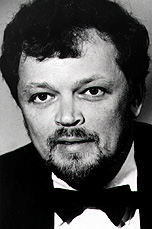 Another August Bank Holiday, another Garden Opera performance in the magical setting of the Observatory Garden in Greenwich… (so it must be a year since I started this blog! Hey! Happy birthday to me!)
Another August Bank Holiday, another Garden Opera performance in the magical setting of the Observatory Garden in Greenwich… (so it must be a year since I started this blog! Hey! Happy birthday to me!)
Alas, no idyllic weather this time, but at least the rain held off. The audience was enthusiastic but not a full ‘house’ – where were the Burghers of Blackheath? Not all in Tuscany, surely? Perhaps put off by the weather, or by the relatively unfamiliar opera on offer?
Donizetti is mostly known for his prolific output of bel canto operas on serious or historical subjects, but he was also a dab hand at comedy, managing to combine swift-flowing action with hilarious patter songs, gentle lyricism and (as my friend Diana noted) some eyebrow-raising sudden key-changes.
Ernesto, the tenor lead, has probably the hardest task in Don Pasquale, having to play the soulful romantic while all about him are embroiled in comedy. Alexander Anderson-Hall rose bravely to the challenge, having to work hard at times but to fine effect. He could also ‘do’ the comedy when required.
Catherine May, as Norina, was a treasure – huge expressive eyes conveying every nuance of surprise, horror, complicity, teasing, play-acting and genuine affection. And she could do the high notes too!
James McOran-Campbell, charismatic as ever (and with a green corduroy three-piece suit to die for), made Dr Malatesta into an untypically youthful but convincing and very funny conspirator. Last but not least, as the eponymous Don Pasquale Deryck Hamon was a hoot – all arms and legs in confusion, infuriatingly pompous, ridiculous when trying to be ‘with it’, yet winning our sympathy for his plight. And he had the low notes…
Bernie Lafontaine provided deft orchestrations for his hard-working six-piece band, which once again sounded convincingly like a whole orchestra.
Stage direction was by Duncan Macfarland (of the Royal Opera House) who updated the action to the ‘late 1970s’, explaining that it was a time when 1960s counter-culture collided head-on with the bourgeois values of middle England, thus enabling him to retain the conflicts of the original while playing down the now-unacceptable social stereotypes of Donizetti’s day. (This did mean losing the bite of the final ‘moral’, in which ‘When an old man wants to marry, he’ll only make a fool of himself’ became something harmless about ‘losing a guidebook’…)
Designers Neil Irish (sets) and Dulcie Best (costumes) rose to the challenge brilliantly. (more…)
 In past years I have tried to chronicle the blooming of the Canary Bird Rose as a sign that spring is on the way (it’s generally one of the first to flower). But this year it was very late indeed…
In past years I have tried to chronicle the blooming of the Canary Bird Rose as a sign that spring is on the way (it’s generally one of the first to flower). But this year it was very late indeed…
 Just heard the very sad news that my dear friend and one-time ‘pupil’ (though she taught me more than I ever taught her), Noelle Mann, has died.
Just heard the very sad news that my dear friend and one-time ‘pupil’ (though she taught me more than I ever taught her), Noelle Mann, has died.


 The Burghers of Blackheath did themselves proud this morning – so many tickets sold for
The Burghers of Blackheath did themselves proud this morning – so many tickets sold for 



Recent Comments